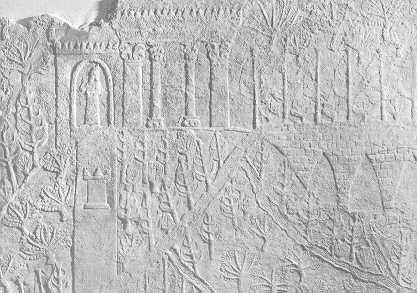How can anthropological analyses of post-industrial crises in British cities help us to understand the riots in English cities in August 2011?
INTRODUCTION “We are all middle class now”, John Prescott triumphantly announced in 1997 ahead of a general election. This statement echoed an already looming truth in British politics – the working class were no longer represented in parliament. It is not difficult to imagine the shared feeling of discontent and discomfort which arose within working class communities when faced with the realisation that the Labour party were no longer on their side. Given this wilful ignorance of a significant portion of the population, it does not seem surprising that this attitude culminated in widespread national riots in the summer of 2011. Yet the political reaction to the riots was not one of sympathy and worry, but of disgust and condescension (Hedge 2012).
The death of Mark Duggan was believed to spark the riots, but the message was soon lost in a flurry of violence and anger. Their original anger, directed at the police and intended to display their unease at an unlawful police murder of an innocent man, soon became more vague and reflected a general sentiment of inequality, unfairness and oppression from police and, by extension, a dominant class system. It became clear that the rioters were seeking “an overwhelming sense of power” in a society which made them feel powerless and downtrodden (McIntyre 2011). Yet this message was lost, and anybody trying to reaffirm it was shot down and criminalised by politicians and the media, e.g. Darcus Howe (Hersh 2011). They were ignored and the riots were put down as “petty crime” and general acts of thuggery. In a society where politicians and the media choose to trivialise matters of such importance and blame everyone but themselves and the system they regulate (Hedge 2012), anthropological studies can offer a lot in terms of interpretation of the riots and the discontent with the status quo displayed by the rioters. In this essay, I will list and outline some of the possible motives for the riots which can be explained anthropologically.
INTER-CLASS DISTANCING When trying to understand the riots, we must analyse the relationship of the two major viewpoints involved; specifically those of the middle class and the working class. What is immediately clear in ethnographic research is a growing contempt for other classes and a “mutual misunderstanding” and disdain (Evans 2006:28) when trying to conceptualise a different class of people. Evans' study of Bermondsey working class families indicates that they are proud of their values and even display a kind of competition with “posh” people who they feel look down on them (Evans 2006). This indicates a natural resistance against dominant perspectives of the working class, which stereotype them as beaten down, submissive people among "slums, dangerous roads, old factories, cramped schools, stunted lives" (Heath 1973, cited in Wiener 1981:162). This negativity directed towards the working class, while possibly accurate, may not be welcome and illustrates misunderstanding and in some cases, ignorance.
The statement that “we are all middle class now” is a blatant sign that not only have the working class been forgotten about, but they are being shunned as something which Britain does not want or need. As a working class Bermondsey woman claims, “we are the backbone of the nation and no one gives a fuck about us” (Evans 2006:31). It is clear that middle/upper class British citizens are blissfully distant from their working class counterparts, and vice versa. When this is taken into consideration then it is no surprise that the riots highlighted such a dire conflict between the social classes.
CONFLICTING PERCEPTIONS OF WORKING CLASS CULTURE Unfortunately, there is quite a lack of ethnographic research centring on the middle class's relationship with the working class (Edwards, Evans & Smith 2012). On the other hand, anthropological descriptions of working class conditions can give us an idea of how middle class academics perceive their working class subjects (e.g. Engels 1892), and it is occasionally a perception drenched in pity and horror at the relative poverty and squalor of people in post-industrial societies. Patronising tones are used to describe their lack of education and 'brutishness'. A whole host of negative words are used to describe working class culture in anthropological literature and this reflects certain biases in middle class attitudes.
The working class themselves, however, take pride in their class and claim to have more life experience and general knowledge of the “real world”, which contains poverty, violence and ill health. They contrast their lives with the relatively sheltered lives of the middle class, as is the case with Evans's Bermondsey community: “They dunno what it means to get by” (Evans 2006:32). Furthermore, “they dunno 'ow to 'ave a good laugh, 'cos of that stiff upper lip” (Evans 2006:32). Evidently, many working class people can see benefits of poverty that the higher classes cannot, ergo this anthropological study illuminates further misunderstandings between classes in Britain which could have caused some of the tension which was expressed during the riots.
PRIMARY SOCIALISATION Many anthropologists have studied the effect that these differing perceptions have had on the upbringing of British working class children, in a world which does not expect much of them simply due to their class and/or position in a post-industrial location. Social mobility in a post-industrial society is very limited, and this is mirrored in the upbringing of children. Children in these areas learn their place from a young age, partially through the education system. The defining features of the middle class is a good job, which they reached by attaining a good education, which is communicated by teachers constantly in schools. Therefore, children learn that without education, they cannot be successful. The problem arises with this understanding:
Tension is created within this social class structure, however, because the system for establishing value through formal educational qualification […] conflicts with other means for gaining status that depend on completely different kinds of social participation about which working class people might be fiercely proud. (Evans 2006)
Additionally, in alternative ethnographic studies of childhood education in post-industrial areas, Allison James (2002) found that teachers would look into the family background of the child by visiting their home prior to the commencement of teaching, so that right from the start the teacher has assumptions about what the child will achieve. By simple application of this self-fulfilling prophecy, the teacher's treatment of the child will change and the child conforms to the image that they have been prescribed. Thus from an early age, the child learns their place in the world indirectly through their class, and this shapes further social interactions and their view of the educational attainment they fail, or do not wish, to grasp. Together with the naïve political view of education as an easy path to social mobility, this makes the child's future rather uncertain.
DESTINED TO A LIFE OF CRIME? It would seem, from ethnographic research of education in post-industrial areas, that the structure of schooling is biased against the working class - especially after the New Labour focus on vocational courses, which are now arguably synonymous with low academic attainment. Coupled with the strain on employment opportunities which is inherent in post-industrial areas (Dawson 2002, Young & Mills 1983) it seems as if the working class face great difficulty fitting into the system laid out by the government.
This could explain why post-industrial areas in crisis, with high levels of working class citizens and unemployment, have correlating levels of crime to match. As Evans (2006) points out, working class children learn to socialise with their peers in a way that doesn't conform to the kind of socialising needed to move up in the world, and so they must try and apply their earned status on the streets in different ways. This could all too easily lead to involvement in gang warfare and drug dealing, as it is this kind of business they are more accustomed to. Thus, people in post-industrial regions become more acclimatised and desensitised to crime and violence, and so rioting would seem like an obvious outlet for their frustrations.
UNSTABLE, UNCERTAIN LIVES As a result of job insecurity and uncertainty about the future, a level of fear and anxiety arises among working class populations. in post-industrial cities like Ashington, which was once a thriving mining city in the north of England, the industry (in this case, a mining industry) leaves and the now-redundant workers remain in poverty and unemployment, while their families are forced to leave the town because of the lack of opportunity for work (Dawson 2002). In these times of change, chaos and some level of anomie can present itself and become an issue. Bourdieu states that violence can be a direct result of job insecurity and uncertainty:
"Competition for work tends to generate a struggle of all against all, which destroys all the values of solidarity and humanity, and sometimes produces direct violence." (Bourdieu 1998:84)
He goes on to explain that "insecurity is the product not of an economic inevitability [...] but of a political will." (Bourdieu 1998:84). Whilst this is a rather grand statement and a sort that we have come to expect from Bourdieu, it is backed up by Wiener (1981), who also blames the values of the dominant class for the stagnation of post-industrial regions. This theory holds some relevance in that it highlights the idea that economic decline and crises in post-industrial Britain is directly linked to politics, and this was likely picked up on by rioters, even if they could not adequately express the source of their discontent.
THE LIMITS OF ANTHROPOLOGY When thinking about the post-industrial crisis in Britain, what appears endlessly in the ethnographic literature is study on racial relations and multiculturalism. While it is an important issue to consider, unfortunately it doesn't shed much light on the 2011 riots, as they seemed to have no racist undertones. If anything, the riots showed solidarity between all races in the cities involved, as the riots were “mostly white people” protesting the death of Mark Duggan, who was black (McIntyre 2011). The riots appeared to be a solidarity of the working class against “the police” - most likely the entire system they feel oppressed and dominated by; the system devised by the ruling classes. It bears noting that working class communities feel closer to people of other races than they do to people of the middle and upper classes. "Anthropologists tend not to set out to study social class, but find that it emerges as relevant in the process of investigating human collectives of other kinds" (Smith 1984, cited in Edwards, Evans & Smith 2012:2).
There seems to be a certain degree of tiptoeing around issues of tensions caused by social class systems in political, economic and anthropological literature. Perhaps it is seen as a taboo subject, or perhaps it is not seen as important. However, it could also be due to the fact that modern politicians tend to use race as a scapegoat for class tensions rather than admit that the fundamental class structure associated with capitalism may be flawed or problematic, or that their policies are encouraging tension and decreasing social mobility. This kind of racial scapegoating can be seen in the shocking comments by historian David Starkey, who, when reacting to the riots, claimed that “the whites have become black” and essentially blamed the riots on “black culture” which has supposedly taken centre stage in the UK.
CONCLUSION It appears that more ethnographic research needs to be done into class in Britain if we are to fully understand the effects of the post-industrial crises. However, from what exists and from pioneering works of the last few years, we can shed light on some of the main causes of class tension. Whilst abstract theories can be useful, more contemporary study could bring up questions we had not considered before.
Words: 1981
BIBLIOGRAPHY
Bourdieu, P. 1998. Acts Of Resistance. Translated from French by Nice, R. 2000. Cambridge: Polity Press.
Dawson, A. 2002. Leisure and Change in a Post-Mining Mining Town. In: Rapport, N., ed. 2002. British Subjects. Oxford: Berg, pp107-120.
Engels, F. 2009. [orig. 1892]. The Condition of the Working Class in England. London: Penguin Books
Evans, G. 2006. Educational Failure and Working Class White Children in Britain. Britain: Palgrave Macmillan.
Evans G., Edwards J. & Smith K. 2012. The Middle Class-ification of Britain. In. Evans G., Edwards J. & Smith K. eds., Class, Community and Crisis in Britain, special section of Focaal, Journal of Historical and Global Anthropology, Vol 62, 2012.
Hedge, N. 2012. Riots and Reactions: Hypocrisy and Disaffiliation? PESGB: Annual Conference. Oxford.
Hersh, J. 2011. London Riots: BBC Interview Gets Testy. Huffington Post, [online]. 10/09/11. Available at: <http://www.huffingtonpost.com/2011/08/09/london-riots-bbc-interview_n_922857.html> [Accessed 22 March 2012].
James, A. 2002. The English Child: Toward a Cultural Politics of Childhood Identities. In: Rapport, N., ed. 2002. British Subjects. Oxford: Berg, pp143-162.
McIntyre. 2011. Manchester & Salford Riots, BBC Newsnight. [News Report]. 2 Sep 2011. Available at: <http://www.youtube.com/watch?v=lsAwdIaDPNw > [Accessed 22 March 2012].
Young, K. & Mills, L. 1983. Managing the Post-Industrial City. London: Heinemann.
Wiener, M. 1981. English Culture and the Decline of the Industrial Spirit 1850-1980. Cambridge University Press.


 In ancient Near-Eastern culture, kings were seen to have a special link to the Gods. They were the connection between the physical world and the heavens. One of the roles of the king would be to construct a lavish garden for a God to dwell in, and some of these extravagant gardens are pictured on reliefs such as the one featured on the right from Nineveh. It matc
In ancient Near-Eastern culture, kings were seen to have a special link to the Gods. They were the connection between the physical world and the heavens. One of the roles of the king would be to construct a lavish garden for a God to dwell in, and some of these extravagant gardens are pictured on reliefs such as the one featured on the right from Nineveh. It matc

